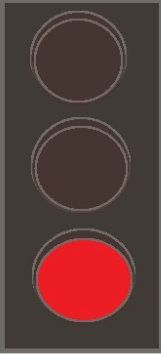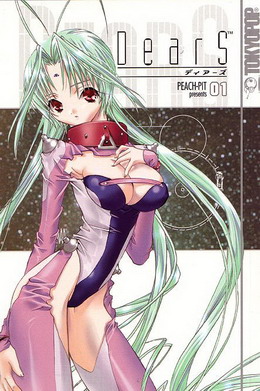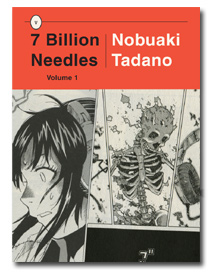PLOT: Kazuto Izuka is your usual mild-mannered schoolkid, who one day happens to stumble upon an abandoned puppy in the rain. The next thing he knows, a mysterious girl comes out of nowhere to beat said pup to a pulp, claiming it is a dangerous space creature. No, she's not a pyschopath, she's Narue, an alien/human hybrid who is here upon Earth to better understand its culture and protect it from any and all hostile alien forces. She soon latches onto Kazuko, and the two begin to informally date. Unfortunately for Kazuto, though, that means he not only has to fend off his classmates from discovering Narue's not terribly well kept secret, but he also must defend himself from other girls from Narue's past who want to get to her via him.
STORY: Well, this certainly is a manga that exists! As I've said before, magical girlfriend stories have a tendancy to be lazy and episodic by their very nature, but Narue takes this to dull new heights of predictability.
The plot barely lingers on the fact that Narue and her father are extraterrestrial. Indeed, it has to remind us of it with a brief exposition recap at the beginning of every chapter so the story can move on to whatever stupid antics will go on in this chapter. I almost have to question why they even bothered with the alien girlfriend angle if most of the action is confined to mundane schoolkid stuff on Earth and most of the extraterestrials (including Narue herself) look just like humans. The best the mangaka can do is try to tap some drama from this dry well of a story by introducing an older sister for Narue, who happens to look like her younger sister due to the effects of time distortion in space travel. Sadly, it's far too late, far too little, and far too naked of an excuse to introduce a loli-ish sort of character without actually making her an actual loli. Call it a way for the manga to have its cheesecake and eat it too.
Oh yes, this manga is not above fanservice. Hell, it finds an excuse to flash Narue's panties roughly every other chapter, and the only time it was ever remotely close to funny was the chapter where Narue gets stuck in the bathroom wall during a botched teleportation. Sadly, this was also probably the most inspired moment of comedy to be found in the whole volume, as the rest tends to be along the lines of 'Narue or some other girl does something outrageous, and Kazuto freaks out!' Of course, this isn't just a magical girlfriend series, but it's also a harem, so practically every girl in a 10 mile radius is drawn to Kazuto and every guy drawn to Narue because...well...er...um...reasons.
Their irresistability is downright baffling, as they and the cast surround them are exceedingly dull and cliche. They don't even TRY to give Kazuto a personality, other than the one chapter where they briefly call him an otaku because he likes some undefined show. He's there solely to be the straightman to the strangeness around him, and to overreact and nosebleed over things. Not even Narue has a personality. Nobody in this manga does! They just take up so much paper, desperately hoping that you haven't noticed how hollow and shallow the plot and characters are, how this concept has been done a million times before, and in most cases done a million times better.
ART: The artwork is just as mundane and uninspired as the story it illustrates. The character designs are singularly flat, angular, and simple. The backgrounds aren't terrible, but are blatantly traced and exceedingly ordinary. Most of the time the panels are so tightly focused that you barely notice them or they are replaced by speedlines. The page composition is ordinary too, and the panels are rather tightly packed onto the page, almost to the point of being claustrophobic and difficult to follow. Even the fanservice is uninspired - the mangaka just throws in a few panty shots and calls it a day. It's all just as flat and bland as the paper it's printed on, and in the end the art is just so very forgettable.
PRESENTATION: There's a stupid little side story involving Kazuto trying to fix Narue's skirt, which is unknowningly tucked into her panties. There's also a brief Q&A with the mangaka, which reads more like a side column from a magazine...which it mostly likely is.
RATING:
 There's nothing original or interesting to be found in this manga, but it's also far too bland and dull to be offended by it. The only thing that The World of Narue is good for is filling time with forgetable nonesense.
There's nothing original or interesting to be found in this manga, but it's also far too bland and dull to be offended by it. The only thing that The World of Narue is good for is filling time with forgetable nonesense.This was published in the USA by Central Park Media. This series is ongoing in Japan, but only 5 volumes were published in the USA and all are out of print.
You can purchase manga like this and much more through RightStuf.com!




